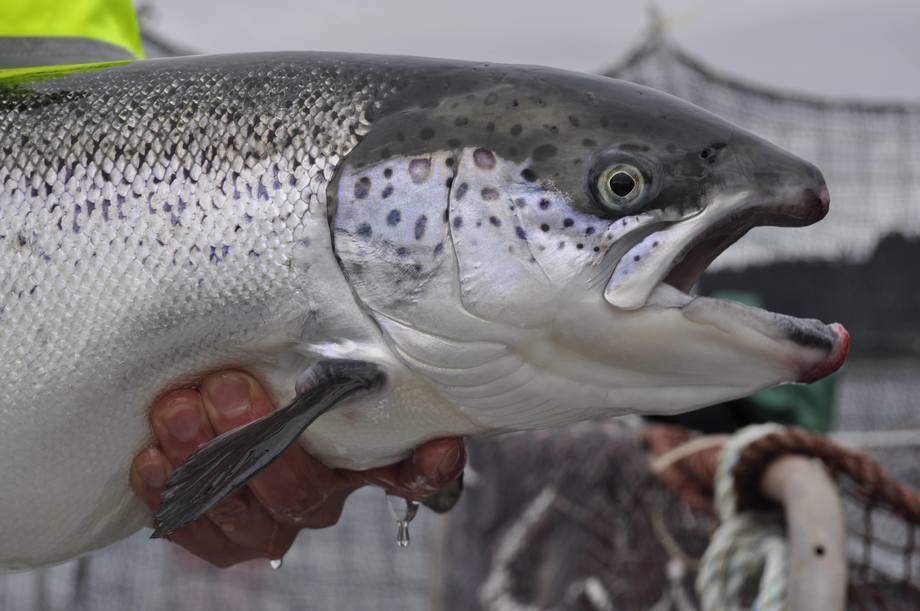|
Image source: fishfarmingexpert.com Highlights
Abstract A feeding trial was conducted to test the growth potential, nutritional utilization, liver health and fillet sensory parameters of sea-water Atlantic salmon (Salmo salar L.) fed diets with increasing substitution of fish meal with insect meal. The insect meal was produced from black soldier fly larvae (Hermetia illucens, L.). Triplicate sea-cages of salmon were fed one of four isonitrogenous and isolipidic diets for 16 weeks. The control diet (IM0) contained 100 g kg−1 fish meal, which was replaced up to 100% with insect meal (33% (IM33), 66% (IM66) and 100% (IM100)), corresponding to dietary insect meal inclusion levels at 50 g kg−1, 100 g kg−1 and 150 g kg−1, respectively. Replacing the dietary fish meal with insect meal did not affect the apparent digestibility coefficients (ADC) of protein, lipid, amino acids and fatty acids, or the digestive enzyme activities. Feed intake, daily growth increase, and feed conversion ratio were also unaffected by the inclusion of insect meal in the diets. Whole body protein, lipid and amino acid composition were not affected by dietary substitution of fish meal with insect meal, while the whole-body fatty acid composition generally reflected that of the diets. Liver lipid accumulation was not affected by replacing the fishmeal with insect meal, as assessed by both histological examinations and chemical analyses. The sensory testing of the fillet revealed only small changes in the fillet sensory quality. In general, this study showed that a total replacement of fish meal with black soldier fly larvae meal in the diets of sea-water Atlantic salmon was possible without negative effects on growth performance, feed utilization, nutrient digestibility, liver traits or the sensory qualities of the fillet.Replacing FM with IM had no significant effects on whole fish dry matter, crude protein, crude lipid, ash or amino acid composition. The whole-body FA composition of the salmon was, however, significantly affected by IM inclusion. By including IM in the diets, the concentration of lauric acid increased (0.5–1.6% of the whole-body total FA in the IM fed fish), while this FA was below the quantification limit in the whole fish fed diets without IM. The concentration of EPA and DHA as well as the n-3/n-6 ratio increased significantly in a linear manner with increasing inclusion of IM at 33 (IM33), 66% (IM66) and 100% (IM100) in the diets. The concentrations of ARA, PUFA and stearidonic acid was not affected by dietary inclusion of IM. Conclusion In this study, we evaluated the effects of graded inclusion level of a partially defatted black solider fly larvae meal on growth performances, digestibility, nutrient utilization, liver health and fillet sensory qualities of Atlantic salmon of a commercially relevant size. Only minor effects were detected of replacing up to 100% of the fishmeal with the insect meal. Therefore, our conclusion is that the insect meal made from BSF is a nutritionally appropriate source of protein for sea-water stage Atlantic salmon. Source Belghit et al., 2019 Summarized by Rawane Hamade B. Eng, Production Engineer
3 Comments
11/5/2022 01:27:27 pm
Continue talk vote police pull phone provide easy. Indeed raise wrong report politics.
Reply
11/11/2022 02:44:46 pm
Husband hard risk know. Media mother positive might nice because traditional road.
Reply
Leave a Reply. |
from researchers all over the worldWe collect research papers and scientific publications to share knowledge around the Black Soldier Fly ArchivesCategories |


 RSS Feed
RSS Feed